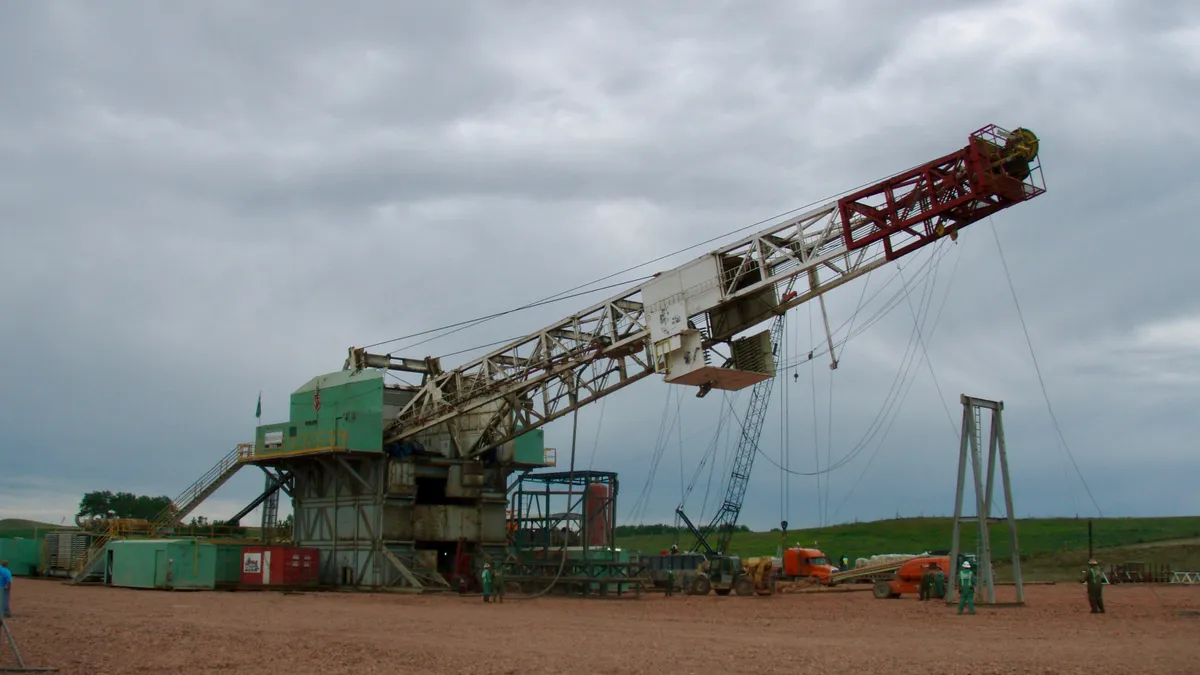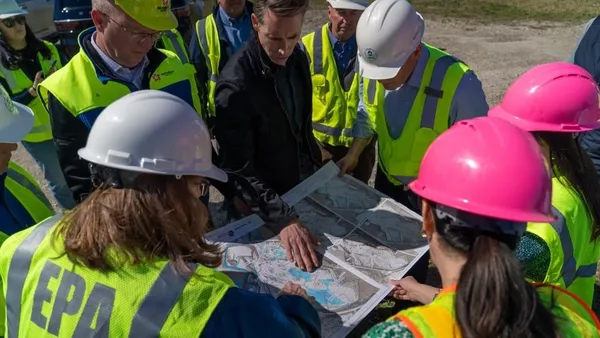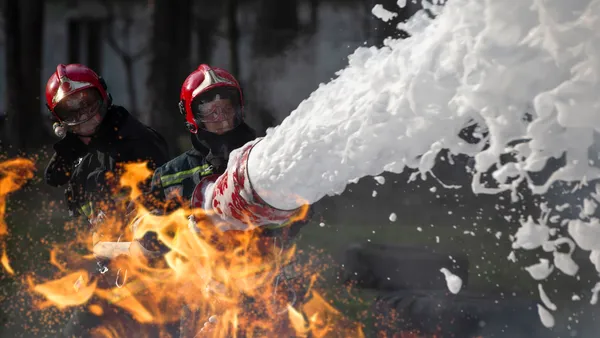Dive Brief:
- The Montana Department of Environmental Quality is gathering public comment and holding hearings on its draft regulations for disposal of technically enhanced naturally occurring radioactive material (TENORM). State regulators propose a 200 picocurie per gram limit at a landfill's gate and a 50-pCi/g annual average, as reported by Yellowstone Public Radio.
- TENORM is a byproduct of oil and gas exploration. Montana currently has four landfill facilities licensed to take the material, which must screen incoming loads for radiation. Only one of the permitted facilities is operational – Oaks Disposal Services near Glendive, which is located in the oil-rich Bakken formation.
- The bulk of Bakken drilling occurs in North Dakota, but the state does not have any licensed TENORM facilities so the waste is shipped to other states, including Montana. North Dakota regulators are currently mulling a TENORM application for Secure Energy Services' 13-Mile Landfill, as reported by the Bismarck Tribune.
Dive Insight:
Radioactive material occurs naturally in rocks and soils. Certain oil exploration and production (E&P) activities concentrate the radiation, resulting in TENORM. The material is regulated on a state-by-state basis. E&P waste is seen as an increasingly lucrative line of business for some of the nation's biggest landfill companies, especially following the EPA's recent decision to continue exempting it from hazardous waste regulations.
Montana DEQ first unveiled draft TENORM regulations in 2017 as it grappled with an influx of out-of-state waste coming from the Bakken oil boom. State regulators later retooled their proposal and gathered feedback from a workgroup that included industry experts, scientists, nonprofits and citizens.
The 2017 proposal had capped radiation at 50 pCi/g of Ra-226 and Ra-228 for incoming loads. North Dakota set a similar limit in 2016, although unlike Montana, the state does not include fracking sand, mud or drill cuttings in its definition of TENORM waste according to a 2016 report prepared for Montana DEQ.
Regulators revised their limit to 200 pCi/g to discourage illegal dumping, according to Montana DEQ waste bureau chief Ed Thamke.
"(The material) is ending up in places where the taxpayer has to clean someone else's mess," Thamke said in an interview with Waste Dive.
He pointed to dumping sites reported in North Dakota as an example. In one case, a contractor hid oil filter socks in an abandoned gas station instead of taking them to a licensed landfill.
"Filter socks typically have a higher concentration of radionuclides because they're concentrating solids that come out of a drill hole," Thamke said. "By accommodating that load at a regulated facility, we're being protective of the environment."
Thamke expects loads exceeding 200 pCi/g will be rare and facilities will need to maintain a 50 pCi/g average. The majority of loads coming to the Oaks facility in the last six years were below 50 pCi/g, according to Montana DEQ information.
Still, Montana residents and the Northern Plains Resource Council advocacy group have expressed concern that the higher 200 pCi/g limit will encourage more shipments of waste from North Dakota oil fields.
Multiple requests for comment from Oaks Disposal Services were not returned. The landfill is owned by Colorado-based Buckhorn Waste Services, which notes a 2 million-ton capacity. The facility opened in 2013 and received 253,000 tons of waste in its first two years according to the Billings Gazette.
Montana DEQ will hold two public meetings on its proposed TENORM regulations and accept public comment until Oct. 21.














